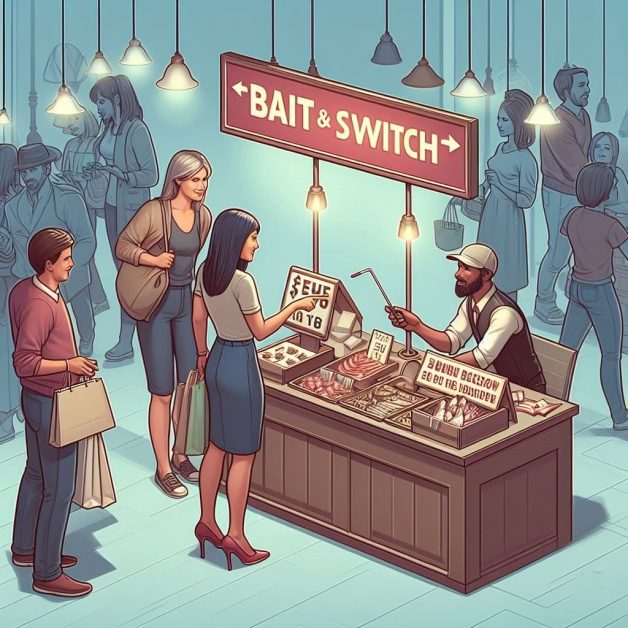

Bait and switch is a deceptive marketing practice that has legal implications and can affect consumers negatively. In this article, we will delve into the details of bait and switch, its legal consequences, and how consumers can protect themselves from falling victim to this fraudulent tactic.
What is Bait and Switch?
Bait and switch is a marketing strategy where a seller attracts customers by advertising an enticing offer, often at an unbelievably low price or with irresistible terms. However, the seller has no intention of fulfilling this offer. Instead, they intend to “switch” customers to a different, typically more expensive product or service. This initial offer, referred to as “the bait,” is used to lure consumers in, and the switch occurs when they are persuaded to purchase something different.
Legal Implications of Bait and Switch
Bait and switch is not just a misleading advertising tactic; it has legal consequences. Here are some of the key legal aspects of this practice:
How to Protect Yourself as a Consumer
Consumers need to be vigilant to protect themselves from falling victim to bait and switch. Here are some tips:
Consumer Awareness and Legal Action
Consumer awareness plays a crucial role in combating bait and switch. By staying informed about your rights and recognizing the signs of deceptive marketing, you can protect yourself and contribute to a fair marketplace. It’s important to remember that bait and switch is not only unethical but also illegal in many jurisdictions.
Legal Recourse for Victims
If you have fallen victim to a bait and switch scheme, you have legal options. You can consult with an attorney who specializes in consumer protection to explore the possibility of legal action against the deceptive seller. Many consumer protection laws are in place to ensure that victims of fraudulent marketing practices receive compensation for their losses.
Conclusion
Bait and switch is a deceptive marketing tactic that can have serious legal consequences for businesses that employ it. As a consumer, being aware of this practice and knowing how to protect yourself is crucial. Always be cautious when you encounter offers that seem too good to be true, and don’t hesitate to report suspected cases to the relevant authorities. By staying informed and vigilant, you can avoid falling victim to bait and switch schemes and contribute to a fair marketplace.
URLs used as sources for the article:
Disclosure: Generative AI Created Article